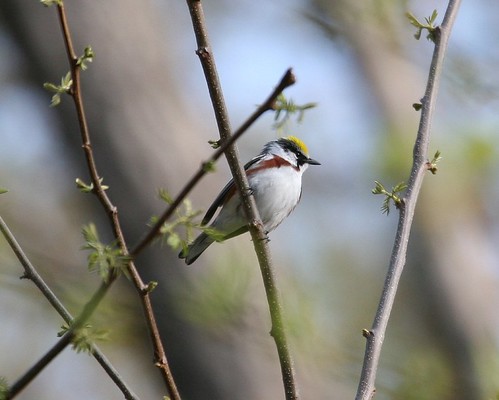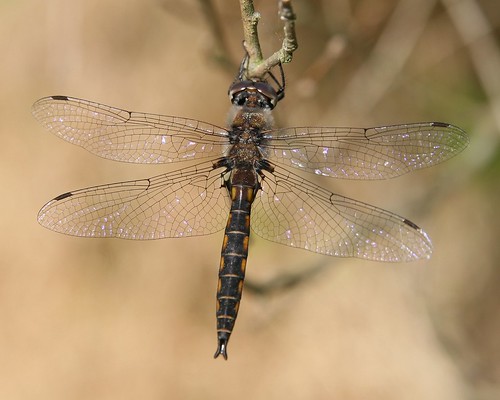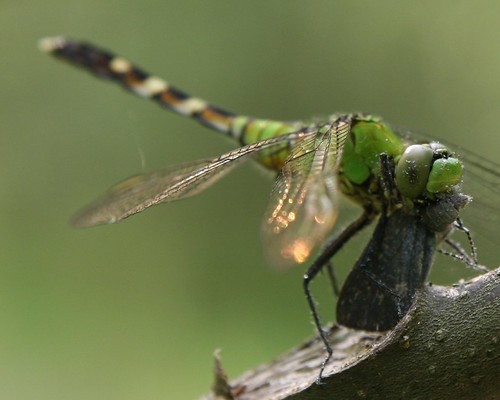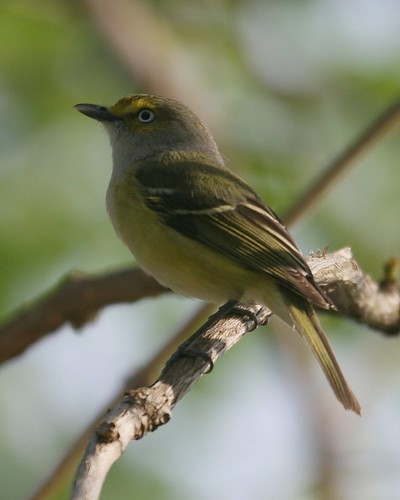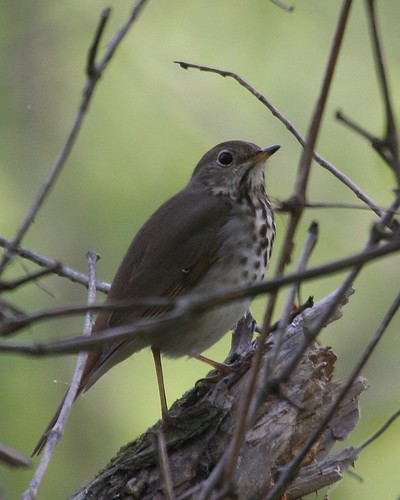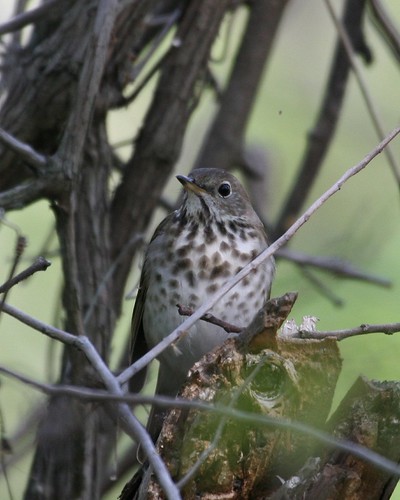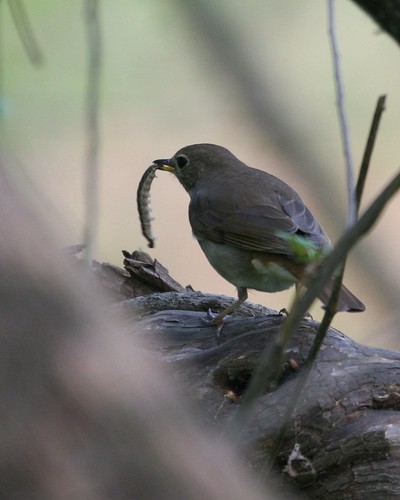I have to be careful when I tell people that I "go hiking", because they often assume that my purpose is to hike, as in "to get from point A to point B". If I ignored birds and all wildlife, and did not carry a camera, then I might hike that way. But it is very difficult for me to ignore birds or any wildlife, and I nearly always carry my camera, so my objective when I hike is definitely not focused on getting from point A to point B. In fact, if anyone ever suggests that it would be cool to accompany me on a hike, I immediately warn them about what I like to call "birdwatching pace". When I hike, I am slow. Really slow. Any bird song, or movement, or wildlife in general, will distract me and may result in incessant photographic attempts. It is not uncommon for me to average about 1 mile per hour when I hike. If the chosen trail is 6 miles long, then prepare for 6 hours of hiking that is punctuated by frequent stops to listen, look and photograph. I really enjoy the heck out of whatever trail I happen to hike :-)
Three of the last four weekends I have managed to get out to the mountains of Virginia and combine a hike with birdwatching and photography. Two of the three were on the South River Falls Trail within Shenandoah National Park. I really enjoy getting out to the mountains during spring migration because of the increased odds of seeing something more interesting. Last year I even caught a glimpse of an American Black Bear.
This, and the next few posts, will include photos from these trips. For this post, I elected to share one of the more common warblers that occur in the mountains of Virginia. As you descend in elevation in Virginia, the Chestnut-sided Warbler becomes less common to the point of being absent. But "on top" of the mountains, they are everywhere. Their "pleased pleased pleased to meetcha!" song rings out from all over the place. In the spring, when I arrive at the trail head for South River Falls Trail and get out of my car, the song of the Chestnut-sided Warbler is nearly always the one I hear first.
Green Treefrog
In my previous post I shared a picture of a dragonfly consuming a moth. The dragonfly was perched in a sapling next to the trail, but was a bit too high for me to get a reasonable picture. So Tammy played the role of "able assistant" by pulling the top of the sapling over until the dragonfly was at eye level for me. After I had taken my share of photos, she allowed the sapling to return to its natural upright position (gently...we did not want to disturb the dragonfly's meal :-).
I was in the process of swapping lenses on my camera when I noticed something odd about the sapling. There was an odd green lump on it, about a foot higher than the dragonfly. I stared for a second before realizing that the odd green lump was actually a Green Treefrog. Then I realized that the frog had been on the sapling the entire time that I was photographing the dragonfly. Either we were too focused on the dragonfly, or the frog was that well hidden.
I could not pass up the chance to take pictures of this frog. So my "able assistant" once again pulled the sapling over from the top so that my subject was at eye level. The frog sat there, waiting it out, while each of us took our photos. Here he is in all his green glory.
I was in the process of swapping lenses on my camera when I noticed something odd about the sapling. There was an odd green lump on it, about a foot higher than the dragonfly. I stared for a second before realizing that the odd green lump was actually a Green Treefrog. Then I realized that the frog had been on the sapling the entire time that I was photographing the dragonfly. Either we were too focused on the dragonfly, or the frog was that well hidden.
I could not pass up the chance to take pictures of this frog. So my "able assistant" once again pulled the sapling over from the top so that my subject was at eye level. The frog sat there, waiting it out, while each of us took our photos. Here he is in all his green glory.
Dragonflies
For me, a trip outside for the purpose of "bird watching" is really much more than just "bird watching". Sure, I am watching and listening for birds, but I also keep an eye and ear out for other critters. And if some critter actually sits still long enough for me to get a picture, then even better. Such is the case with insects.
While I have not yet invested in a macro lens, I still find opportunity to get fairly close to the occasional bug. Dragonflies are a great example. Sometimes they are skittish and will not tolerate you getting close. But other times they are just hanging out, and that is when I might get a nice up-close photograph.
These two photos are great examples. Both were taken during walks within Dutch Gap Conservation Area (DGCA) in April of this year. The first dragonfly was just sitting on his perch in direct sun. I got as close as my lens would allow (inches away) and snapped a bunch of pictures, and he never budged. The second dragonfly was more interesting. I have never seen this before, but I suppose dragonflies have to eat sometime. This particular dragonfly appeared to be eating what used to be a moth. While he ate, I was able to get fairly close for some photos.
With birds, I have a good chance of identifying them. Not so with dragonflies. I do not own a field guide (yet), so the only way I manage to identify them are getting lucky on another website, or enjoying the charity of other more knowledgeable folks. So, these two are just "dragonflies" for now.
While I have not yet invested in a macro lens, I still find opportunity to get fairly close to the occasional bug. Dragonflies are a great example. Sometimes they are skittish and will not tolerate you getting close. But other times they are just hanging out, and that is when I might get a nice up-close photograph.
These two photos are great examples. Both were taken during walks within Dutch Gap Conservation Area (DGCA) in April of this year. The first dragonfly was just sitting on his perch in direct sun. I got as close as my lens would allow (inches away) and snapped a bunch of pictures, and he never budged. The second dragonfly was more interesting. I have never seen this before, but I suppose dragonflies have to eat sometime. This particular dragonfly appeared to be eating what used to be a moth. While he ate, I was able to get fairly close for some photos.
With birds, I have a good chance of identifying them. Not so with dragonflies. I do not own a field guide (yet), so the only way I manage to identify them are getting lucky on another website, or enjoying the charity of other more knowledgeable folks. So, these two are just "dragonflies" for now.
White-eyed Vireo
Even though I posted a couple photos of a White-eyed Vireo back in March of this year, I have another to post today. The photos I posted in March were from Florida, where they are year round residents. Today's photo is of a migrant passing through DGCA in Virginia this past April.
The sound of vireos in the trees and underbrush is welcome sign that spring has returned. While there is no shortage of the endless singing of Red-eyed Vireos, hearing the "chik purr-ee-ay chik" song of a White-eyed Vireo is little less common and always a special find. This individual was singing his song repeatedly, moving fairly quickly from perch to perch within the confines of a bushy area next to the trail. I stopped, watched and waited with my camera until he eventually came out onto a perch that was not obscured by any vegetation.
The sound of vireos in the trees and underbrush is welcome sign that spring has returned. While there is no shortage of the endless singing of Red-eyed Vireos, hearing the "chik purr-ee-ay chik" song of a White-eyed Vireo is little less common and always a special find. This individual was singing his song repeatedly, moving fairly quickly from perch to perch within the confines of a bushy area next to the trail. I stopped, watched and waited with my camera until he eventually came out onto a perch that was not obscured by any vegetation.
Pileated Woodpecker
On one of my recent walks in DGCA I had a Pileated Woodpecker call from a tree, almost right over my head. Their call is loud. When this particular bird called out from over my head, my heart skipped a beat.
I snapped a few photos of the bird from the interesting perspective I had, and then watched as the bird flew to another (very dead) tree. It was then that I realized its call was to let its mate know that it had returned. She emerged from a nest cavity in the dead tree, and he climbed in. Very cool.
Here is one of my pictures of the male (with the red patch on his cheek), taken while looking nearly straight up.
I snapped a few photos of the bird from the interesting perspective I had, and then watched as the bird flew to another (very dead) tree. It was then that I realized its call was to let its mate know that it had returned. She emerged from a nest cavity in the dead tree, and he climbed in. Very cool.
Here is one of my pictures of the male (with the red patch on his cheek), taken while looking nearly straight up.
Hermit Thrush
When I am in the field there are certain things that I use to help me find birds. First, I rely heavily on bird song. This is very true in the spring when everything is singing away. I am much more likely to detect a singing bird than a silent bird. Sometimes I hear a bird, identify it from its song, but never manage to see it. Learning bird songs has been a huge help in these situations.
Without bird song I rely on movement. If a bird moves, and I see that movement, then I can try to follow it and maybe identify it. Sometimes I see movement in my peripheral vision and then I have to stop, scan and attempt to relocate the bird. Such was the case with this Hermit Thrush.
As I walked the River Trail at DGCA I noticed movement to my right, but when I looked in that direction I did not see what caused it. Apparently I had flushed this Hermit Thrush. He found a new roost and then just sat still. After I noticed the original movement, I stopped and scanned and got lucky. Finding a bird that is just sitting there and watching you without making a sound is just plain lucky. That is the feeling I get when I suddenly notice an owl in a nearby tree who has been watching me for several minutes. And that is the feeling I got with this thrush. Even after I spotted him, he just sat and watched me. I snapped a bunch of photos hoping that some of them would be reasonable. He, on the other hand, eventually got bored of me and decided that a nearby caterpillar was much more interesting. Yummy!
Without bird song I rely on movement. If a bird moves, and I see that movement, then I can try to follow it and maybe identify it. Sometimes I see movement in my peripheral vision and then I have to stop, scan and attempt to relocate the bird. Such was the case with this Hermit Thrush.
As I walked the River Trail at DGCA I noticed movement to my right, but when I looked in that direction I did not see what caused it. Apparently I had flushed this Hermit Thrush. He found a new roost and then just sat still. After I noticed the original movement, I stopped and scanned and got lucky. Finding a bird that is just sitting there and watching you without making a sound is just plain lucky. That is the feeling I get when I suddenly notice an owl in a nearby tree who has been watching me for several minutes. And that is the feeling I got with this thrush. Even after I spotted him, he just sat and watched me. I snapped a bunch of photos hoping that some of them would be reasonable. He, on the other hand, eventually got bored of me and decided that a nearby caterpillar was much more interesting. Yummy!
Subscribe to:
Posts (Atom)
